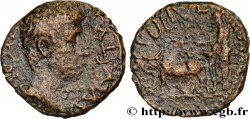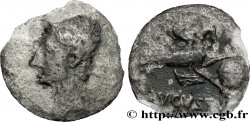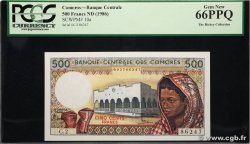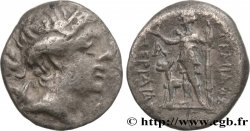bpv_355627 - AUGUSTO Tétradrachme syro-phénicien
No disponible.
Artículo vendido en nuestra tienda (2016)
Precio : 195.00 €
Artículo vendido en nuestra tienda (2016)
Precio : 195.00 €
Tipo : Tétradrachme syro-phénicien
Fecha: An 30 et 13e consulat
Nombre del taller / ciudad: Antioche, Syrie, Séleucie et Piérie
Metal: plata
Diámetro: 25,5 mm
Eje de acuñación: 12 h.
Peso: 14,57 g.
Comentarios sobre el estado de conservación:
Exemplaire sur un flan bien centré à l’usure importante, mais complètement lisible et identifiable, style et frappe standards pour l’émission. Belle tête d’Auguste. Sujets bien venus au revers. Belle patine de collection ancienne
N° en los catálogos de referencia :
Pedigrí:
Cet exemplaire provient du stock de Philippe Saive et de la collection MG
Anverso
Descripción del anverso: Tête laurée d’Auguste à droite entouré de la stemma (O*).
Leyenda del anverso: KAISAROS SE-BASTOU (Kaisaros Sebastou)
Traducción del anverso: (César Auguste).
Reverso
Descripción del reverso: Tyché (Ville d’Antioche) tourelée, voilée et drapée assise à droite sur un rocher, tenant une palme de la main droite ; à ses pieds à droite, l’Oronte nageant à droite.
Leyenda del reverso: ETOUS - L - NIKHS/ (UPAT) IG (Etous Nikhs)
Traducción del reverso: Nouvelle année victorieuse 30 / Treizième consulat / monogramme d’Antioche.
Comentario
Cette émission, qui s’étend de l’an 27 (5 AC) à la mort de l’Empereur, en l’an 44 du règne (14 AD) présente un type religieux plus oecuménique que ceux qu’utilisèrent les Séleucides : la Tyché de la ville d’Antioche. On peut penser que l’Antioche de l’époque, probablement une ville de 150 à 200.000 habitants, était un creuset de cultes différents et que les Romains, plutôt que d’imposer un dieu particulier, choisirent une image dans laquelle tous les Antiochéens, voire tous les habitants de la région, pouvaient se reconnaître. La statue de la Tyché représentée au revers, était la statue cultuelle de l’artiste Eutychides, si célèbre que des copies d’époque nous en sont parvenues.
Dans la base TSP maintenue par Michel Prieur, cent dix-huit exemplaires sont maintenant répertoriés.
This issue, which extends from the year 27 (5 BC) to the death of the Emperor, in the year 44 of the reign (14 AD) presents a more ecumenical religious type than those used by the Seleucids: the Tyche of the city of Antioch. We can think that Antioch at the time, probably a city of 150 to 200,000 inhabitants, was a melting pot of different cults and that the Romans, rather than imposing a particular god, chose an image in which all the Antiochians, or even all the inhabitants of the region, could recognize themselves. The statue of the Tyche represented on the reverse, was the cult statue of the artist Eutychides, so famous that examples of it from the period have come down to us. In the TSP database maintained by Michel Prieur, one hundred and eighteen examples are now listed
Dans la base TSP maintenue par Michel Prieur, cent dix-huit exemplaires sont maintenant répertoriés.
This issue, which extends from the year 27 (5 BC) to the death of the Emperor, in the year 44 of the reign (14 AD) presents a more ecumenical religious type than those used by the Seleucids: the Tyche of the city of Antioch. We can think that Antioch at the time, probably a city of 150 to 200,000 inhabitants, was a melting pot of different cults and that the Romans, rather than imposing a particular god, chose an image in which all the Antiochians, or even all the inhabitants of the region, could recognize themselves. The statue of the Tyche represented on the reverse, was the cult statue of the artist Eutychides, so famous that examples of it from the period have come down to us. In the TSP database maintained by Michel Prieur, one hundred and eighteen examples are now listed








 Informar de un error
Informar de un error Imprimir la página
Imprimir la página Comparte mi selección
Comparte mi selección Haz una pregunta
Haz una pregunta Consignar / vender
Consignar / vender
 Descriptivo
Descriptivo















